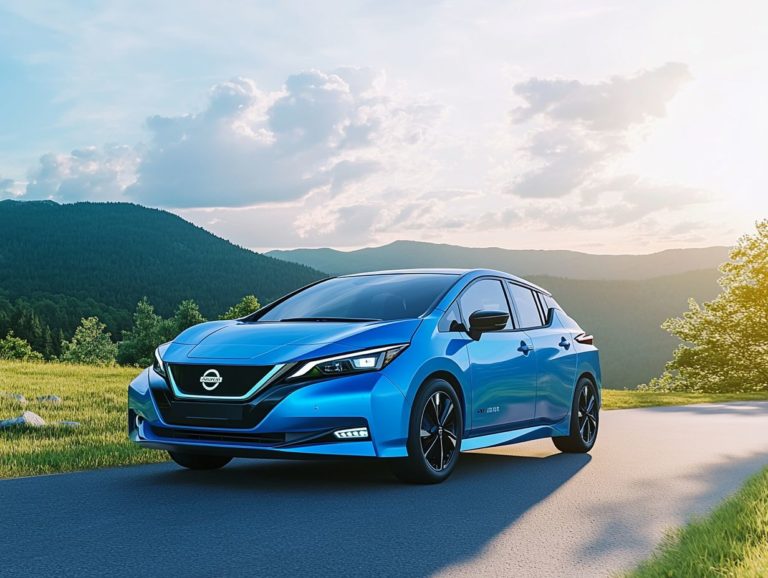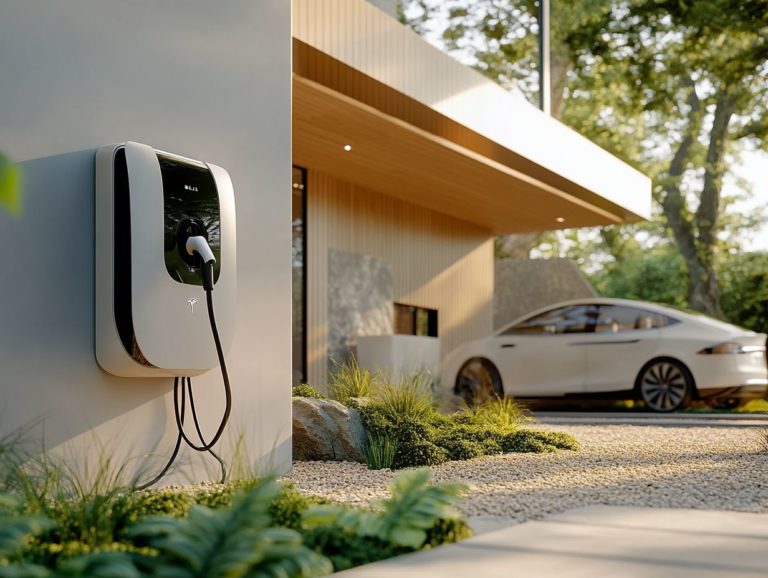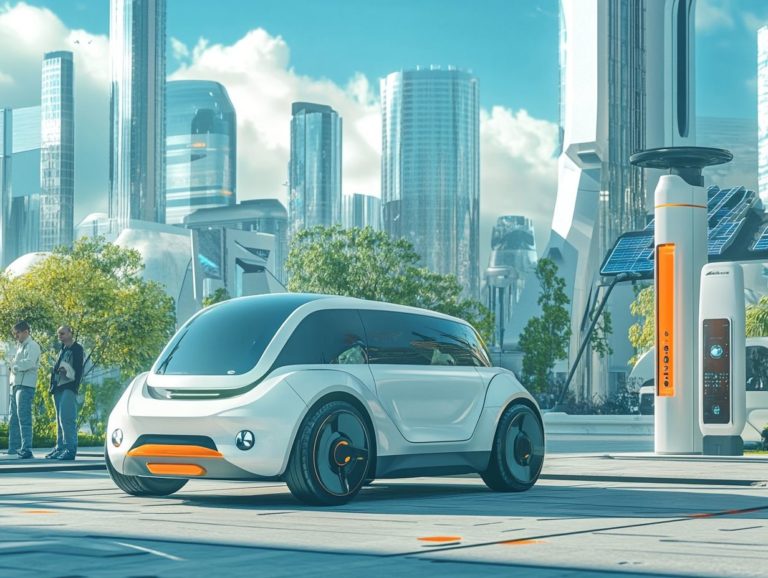The Evolution of Electric Vehicle Design
Electric vehicles (EVs) have truly evolved from their early innovations, revolutionizing your travel experience and leaving a significant mark on the automotive industry.
In this article, discover the history of EVs, uncovering key breakthroughs and advancements that have shaped their design. Explore eco-friendly features and cutting-edge technology that will shape the future of travel, while examining current trends and future possibilities.
The article will also discuss challenges and limitations facing EVs. Join in as you navigate the fascinating journey of electric vehicle design.
Contents
- Key Takeaways:
- The History of Electric Vehicles
- Advancements in Electric Vehicle Design
- Impact of Electric Vehicles on the Automotive Industry
- Current Trends in Electric Vehicle Design
- The Future of Electric Vehicle Design
- Challenges and Limitations in Electric Vehicle Design
- Frequently Asked Questions
- What is the history of electric vehicles?
- How has electric vehicle design evolved over time?
- What are the main factors driving the evolution of electric vehicle design?
- How has battery technology impacted the design of electric vehicles?
- What are some of the most significant design changes in modern electric vehicles?
- What can we expect in the future for electric vehicle design?
Key Takeaways:
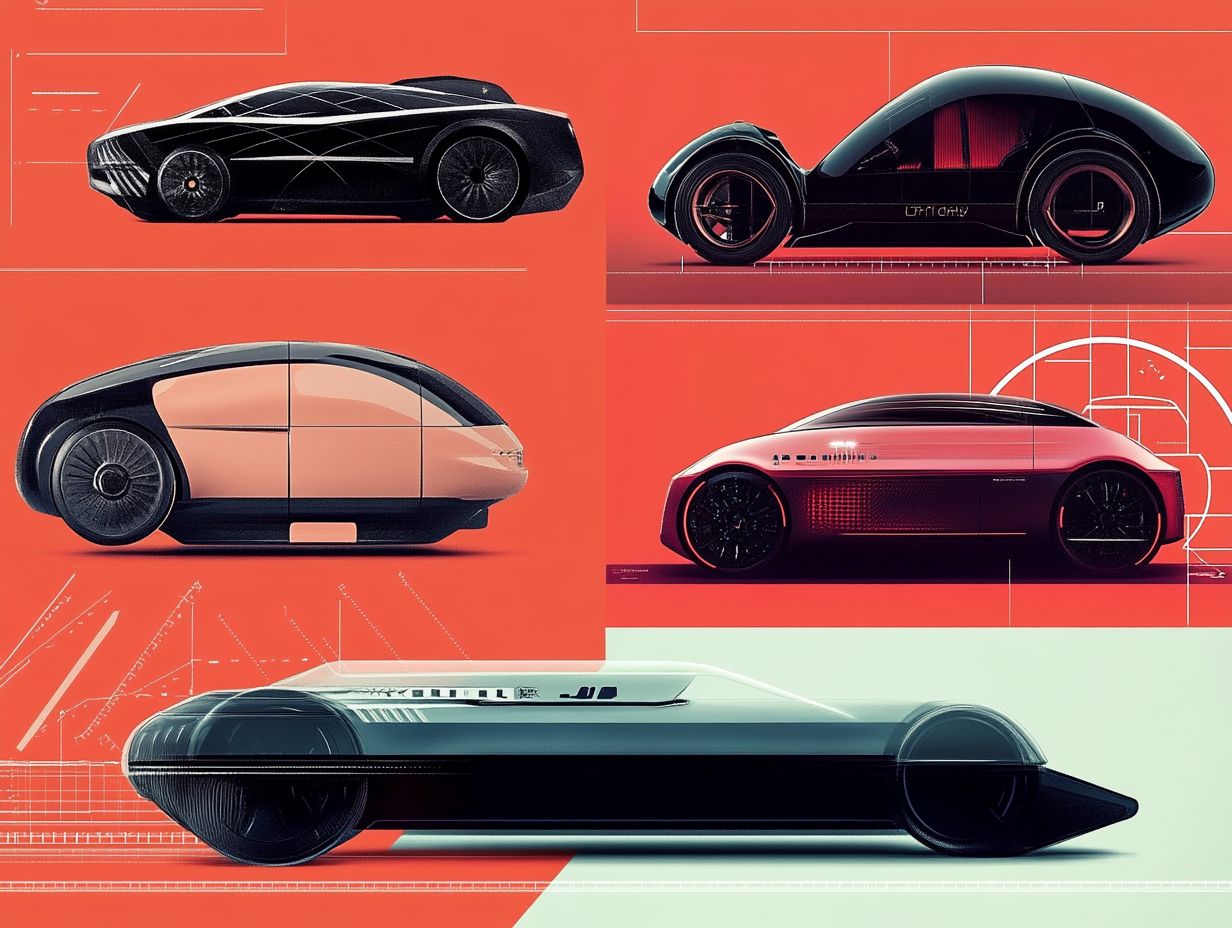
- Electric vehicles have a long history, with early innovations dating back to the 19th century.
- New technology has greatly improved the design of electric vehicles, making them more efficient and attractive to consumers.
- The rise of electric vehicles has led to significant changes in the automotive industry, including shifts in manufacturing and a move towards eco-friendly design elements.
The History of Electric Vehicles
The history of electric vehicles (EVs) invites you to explore a fascinating journey that dates back to the 19th century. Pioneers like William Morrison and Thomas Davenport laid the foundation for early electric mobility, daring to challenge the reign of the gas engine and gasoline-powered cars.
As society advanced, observe how EVs have evolved through various stages, showcasing remarkable new technology and increasing consumer interest in a sustainable future.
From the creation of the first electric vehicle to today s cutting-edge models, this historical timeline highlights the relentless pursuit of innovation in battery technology (the systems that store energy for electric cars) and design improvements that have ultimately shaped the electric mobility landscape you see today.
Early Innovations and Development
Early innovations in electric vehicles were led by pioneering figures like William Morrison and Thomas Davenport, who crafted the first prototypes in the late 1800s, signaling a remarkable shift away from the gas engine.
Morrison s electric wagon, capable of transporting passengers, showcased the practical potential of electric propulsion, while Davenport designed a small locomotive powered by batteries, highlighting the versatility of electric technology. These initial designs proved that electric power could be a viable means of transportation and underscored important features such as low emissions and a notably quiet operation.
This foundational work set the stage for future inventors and engineers, who refined these ideas, ultimately giving rise to more efficient battery technologies and increasingly sophisticated electric drivetrains (the systems that transfer power to the wheels). This exciting evolution in electric mobility showcases the incredible potential these early innovators had.
Advancements in Electric Vehicle Design
Advancements in electric vehicle design have significantly reshaped the automotive landscape, especially with breakthroughs in battery technology. This innovation is crucial for enhancing the efficiency and performance of electric cars, particularly those crafted by Tesla Motors and other top-tier manufacturers.
Technological Breakthroughs
Technological breakthroughs in battery technology have significantly enhanced the feasibility and appeal of electric cars, allowing you to explore options from industry leaders like Tesla Motors. Their high-performance electric and hybrid vehicles seamlessly blend the advantages of both electric power and gas engines.
Recent advancements have resulted in batteries with higher energy densities, enabling longer ranges without the cumbersome increase in size or weight. Imagine charging your vehicle to 80% in under 20 minutes yes, that’s now a reality. This effectively dispels any lingering concerns about long charging times.
Modern batteries have seen astonishing improvements in lifespan, often exceeding an impressive 300,000 miles before they need replacing. Such developments not only bolster your confidence as a consumer but also play a pivotal role in shaping market trends, encouraging you and many others to consider electric vehicles as a viable and attractive choice for your transportation needs.
Impact of Electric Vehicles on the Automotive Industry
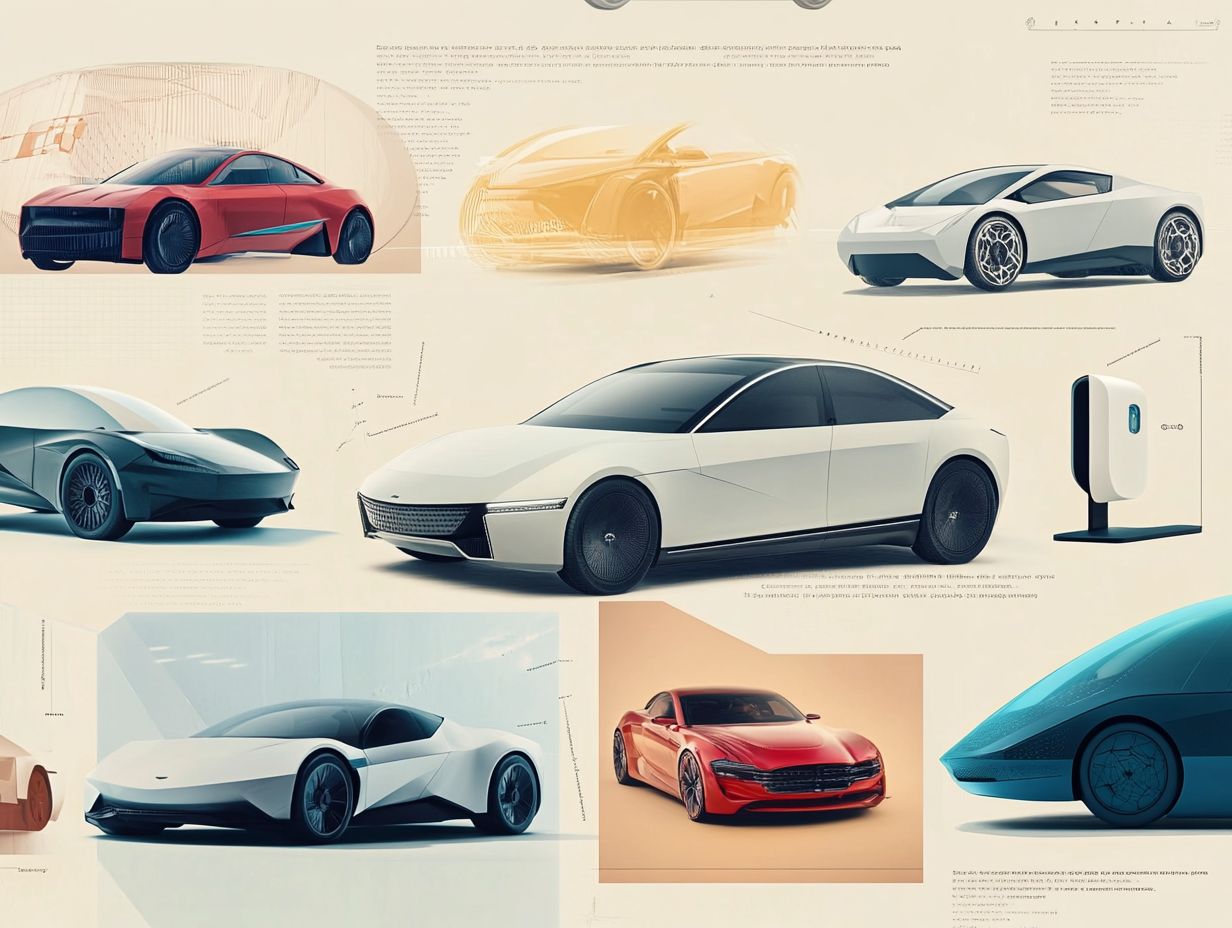
The rise of electric vehicles has transformed the automotive landscape. This shift toward electric mobility aligns with government initiatives aimed at minimizing environmental impact and fostering a sustainable future.
This transition not only supports global ecological goals but also stimulates impressive market growth, positioning you at the forefront of this dynamic evolution.
Changes in Manufacturing and Sales
As electric vehicles gain traction, changes in manufacturing and sales processes are taking center stage. Manufacturers must adapt to new production techniques and sales models influenced by government policies and growing consumer demand for sustainable options.
These transformations are compelling manufacturers to embrace automation in their factories. They are using robots and artificial intelligence to streamline assembly lines and boost efficiency. This shift addresses challenges like getting the materials needed for production, ensuring they are both sustainable and eco-friendly.
For instance, many leading brands are pivoting to a direct-to-consumer sales approach. This contrasts sharply with the traditional dealership model for gasoline vehicles. This strategy fosters greater transparency and customer engagement during the purchasing process, involving online platforms and personalized experiences that resonate with eco-conscious consumers.
Current Trends in Electric Vehicle Design
Current trends in electric vehicle design reveal a significant shift toward eco-friendly features and cutting-edge technologies. There is a strong emphasis on integrating charging infrastructure and autonomous capabilities, all aimed at elevating user experience while promoting sustainability.
Eco-Friendly Features and Design Elements
Eco-friendly features and design elements are becoming central to electric vehicles. These emphasize sustainability and resource efficiency to foster a greener future.
Manufacturers are now using innovative materials like recycled aluminum and bio-based plastics. This significantly lowers the carbon footprint during production. Technologies like regenerative braking systems capture energy that would otherwise go to waste, enhancing vehicle efficiency.
These advancements appeal to the growing demographic of environmentally-conscious consumers. They also align with global sustainability goals. Electric vehicles are evolving into essential players in a healthier economy!
By adopting these eco-friendly practices, companies show their commitment to preserving the planet while catering to a market that values ethical consumerism.
Integration of Autonomous Technology
The integration of autonomous technology in electric vehicles transforms how you perceive and interact with your car. It enhances safety and convenience while addressing evolving attitudes towards automation in transportation.
Features like self-parking and adaptive cruise control redefine your everyday driving experience. These make vehicles simpler to operate and more appealing to a broader audience. Advanced navigation systems now use real-time data, enabling you to navigate effectively while reducing stress levels.
As these groundbreaking advancements become more common, you may find yourself increasingly inclined to adopt electric vehicles. This contributes to significant shifts in market trends.
This growing acceptance mirrors a larger movement toward sustainability, recognizing the synergy between electrification and autonomy in shaping a future where driving is both efficient and environmentally friendly.
The Future of Electric Vehicle Design
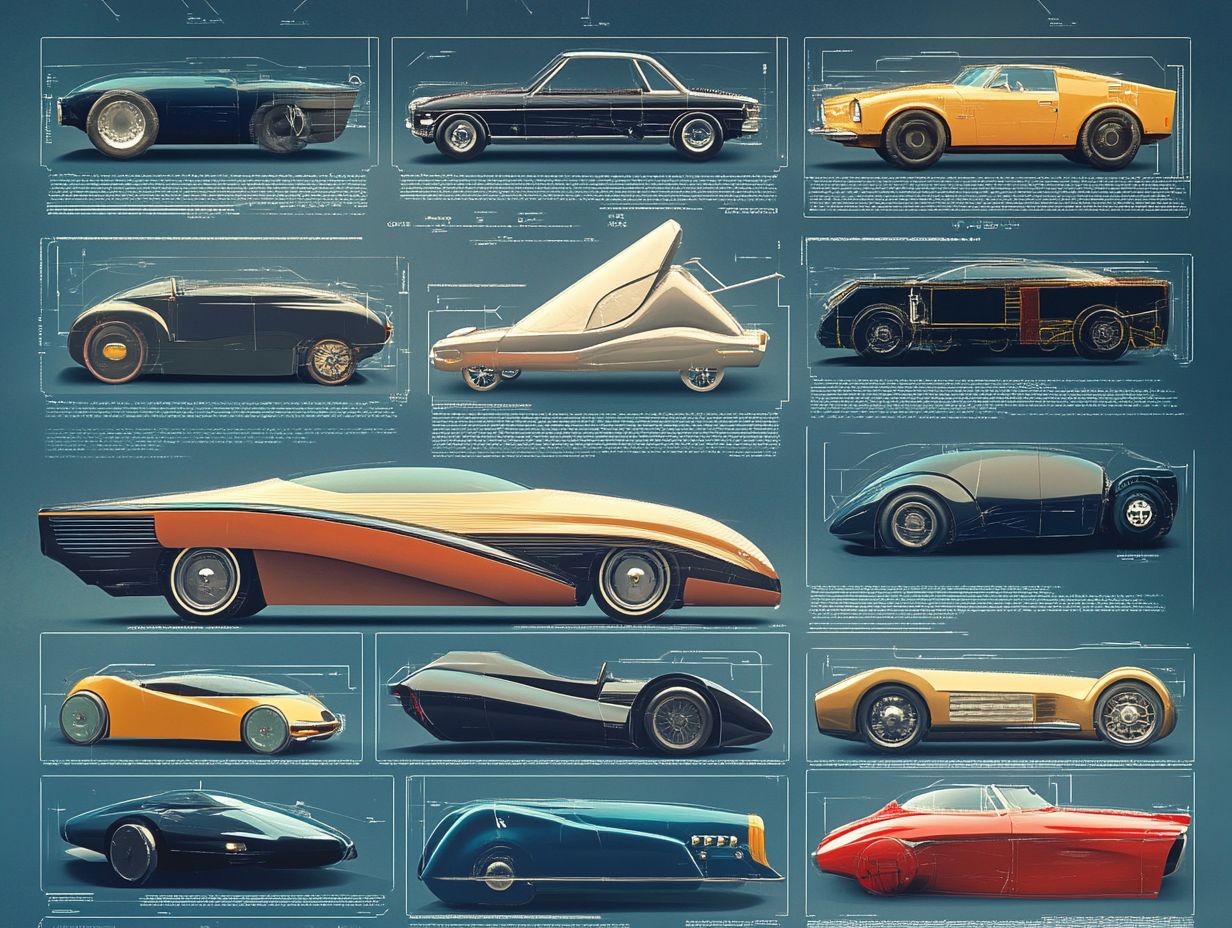
The future of electric vehicle design unfolds with thrilling innovations, much like the evolution of luxury car design. These advancements are driven by new developments in battery technology and a dedicated pursuit of sustainability.
This evolution aims to significantly reduce the environmental impact of traditional transportation. It paves the way for a cleaner, more efficient world.
Predictions and Possibilities
Predictions for the future of electric vehicles suggest you can expect substantial market growth. This growth is driven by evolving government policies that advocate for sustainable transportation and technological advancements that enhance the accessibility and appeal of electric cars.
As you prioritize eco-friendly choices, industry experts anticipate a surge in adoption rates. This shift is propelled by economic incentives and a heightened awareness of environmental impacts.
Studies underscore the crucial role of federal and local initiatives like tax rebates and investments in charging infrastructure in shaping consumer perceptions. The collaboration between automakers and technology firms is poised to accelerate innovation, ensuring electric vehicles are not only more efficient but also more appealing to a wider audience.
The interplay of these factors points to a promising trajectory for the integration of electric vehicles into your daily life.
Challenges and Limitations in Electric Vehicle Design
Despite the exciting advancements in electric vehicle design, you might face some challenges that need attention. Issues surrounding charging infrastructure and cost concerns can pose significant hurdles.
Infrastructure and Cost Concerns
Infrastructure and cost concerns create barriers to your transition to electric vehicles. The scarcity of charging stations and the higher initial investment often pause those considering the switch from traditional gasoline-powered cars.
Your hesitation is further amplified by the limited convenience of charging options compared to the easily accessible refueling stations for internal combustion vehicles. The lack of a comprehensive charging network can create range anxiety (the fear of running out of battery power before reaching a destination), prompting you to question the practicality of choosing electric alternatives.
To tackle these challenges, government officials and industry leaders are actively pursuing initiatives to expand charging infrastructure. This includes financial incentives for installation and grants targeted toward local municipalities.
As the total cost of ownership for electric vehicles continues to improve thanks to technological advancements and declining battery prices you may find yourself more inclined to embrace this shift. This could ultimately lead to a significant increase in adoption rates.
Frequently Asked Questions
What is the history of electric vehicles?
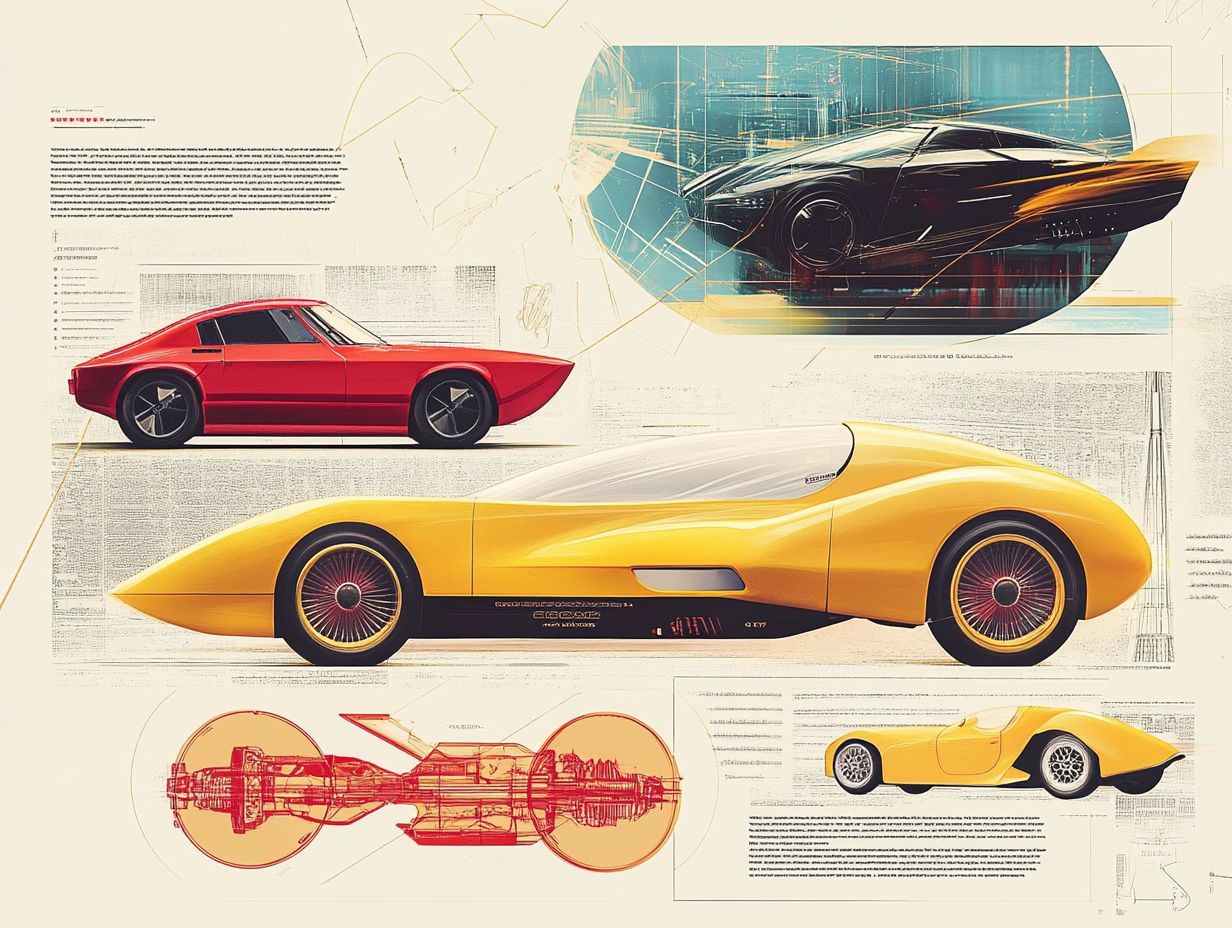
The first electric vehicle was invented in the 1800s. However, it wasn’t until the 2000s that they gained mainstream popularity as a viable alternative to gas-powered cars.
How has electric vehicle design evolved over time?
In the early days, electric vehicles were limited by their short range and slow speed. However, advancements in technology have enabled electric vehicles to now have longer ranges, faster speeds, and more modern designs.
What are the main factors driving the evolution of electric vehicle design?
The main factors include advancements in battery technology, increasing concerns about the environment and sustainability, and a demand for more efficient and cost-effective transportation options.
How has battery technology impacted the design of electric vehicles?
Battery technology has played a crucial role in the evolution of electric vehicle design. With the development of more powerful and efficient batteries, electric vehicles can now travel longer distances and have faster charging times, making them more practical for everyday use.
Imagine driving an electric car that can take you anywhere without a worry! Explore your options today and consider how these advancements could impact your life.
What are some of the most significant design changes in modern electric vehicles?
Modern electric vehicles are sleeker and more aerodynamic.
They incorporate advanced features like regenerative braking, which is a system that recycles energy to improve efficiency and range.
What can we expect in the future for electric vehicle design?
Get ready for an exciting future in electric vehicle design! We’ll see longer ranges, faster charging, and innovative features that will change the way we drive.
We will also see more sustainable and eco-friendly materials used in their production.

